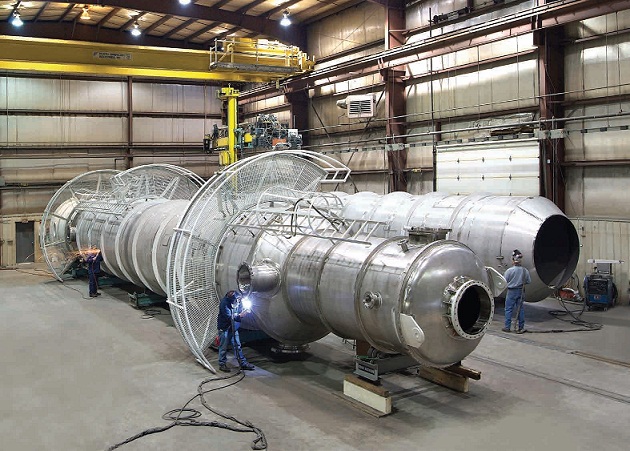High temperature corrosion- Which materials can withstand
When a metal comes in contact of an oxidizing gas at high temperature, it is corroded by direct reaction with gas that even doesn’t need an electrolyte. This kind of corrosion is known as tarnishing, high temperature oxidation and scaling. The corrosion rate increases considerably with increase in temperature in case of general steels and stainless steel materials. A dense surface layer is developed due to reaction at gas-metal interface that results into cation-anion transfer through the layer which acts as electrolyte. For regular nonporous scales, ionic transport through the scale is the rate-controlling process. The heat stability, defect structure of ions and specific morphological characteristics of the layer produced are essential factors to determine the corrosion resistance offered by an alloy in a particular environment.
The initial surface film development is very fast. If it is a non-porous solid and fully encloses the metal surface, the reaction rate decreases as soon as the thickness level becomes sufficient for the transport of reactive species via the layer then the corrosion rate is controlled. The after corrosion rate is based on the details of this transfer mechanism that could be because of electrical potential or concentration gradients or to migration alongside the preferential paths and hence may correspond to various rate laws.
At the elevated temperatures, the growth of mildly security oxides can be fast. A perfect protective oxide should comprise of the following properties
- Large thermodynamic stability so that it develops before the other reaction products are created in the given conditions.
- Small vapour pressure to develop solid oxides that doesn’t lose in the media
- Small coefficient of diffusion of reactants to possess the mild development rate of layer
- High melting point
- Good adherence to the metal substrate that often includes a coefficient of thermal expansion near to the metal and adequate high temperature plasticity to prevent fracture from differential thermal expansion stresses that can be created from thermal cycling.
The high temperature layers are often considered as oxides even also as sulphides, carbides or combination of them. The oxides and sulphides are semiconductor in nature. Meanwhile the sulphides are less secure as compare to oxides.
Oxidation at the Elevated Temperature
The alloys recommended for high temperature corrosion applications have the potential to develop security oxide layers. Otherwise where the alloy has supreme high temperature strength characteristics, it should be secured by a specific coating material. The most reliable protective oxides are Cr2O3, Al2O3 and SiO2. The oxides of Al2O3 in the pure form have the slightest transport rates for metal and oxygen ions and hence offer the great resistance to oxidation.
The alloying needs for the development of specific oxide scales are based on alloy composition and required application temperature.
The Nickel based Hastelloy C-276 wire and other grades are designed for the service in the high temperature oxidizing media. These alloys form an adherent oxide layer that significantly slows down the oxidation rate at temperature limits above 1000oC. Therefore they are a recommended material for use in the high temperature corrosive environments.


